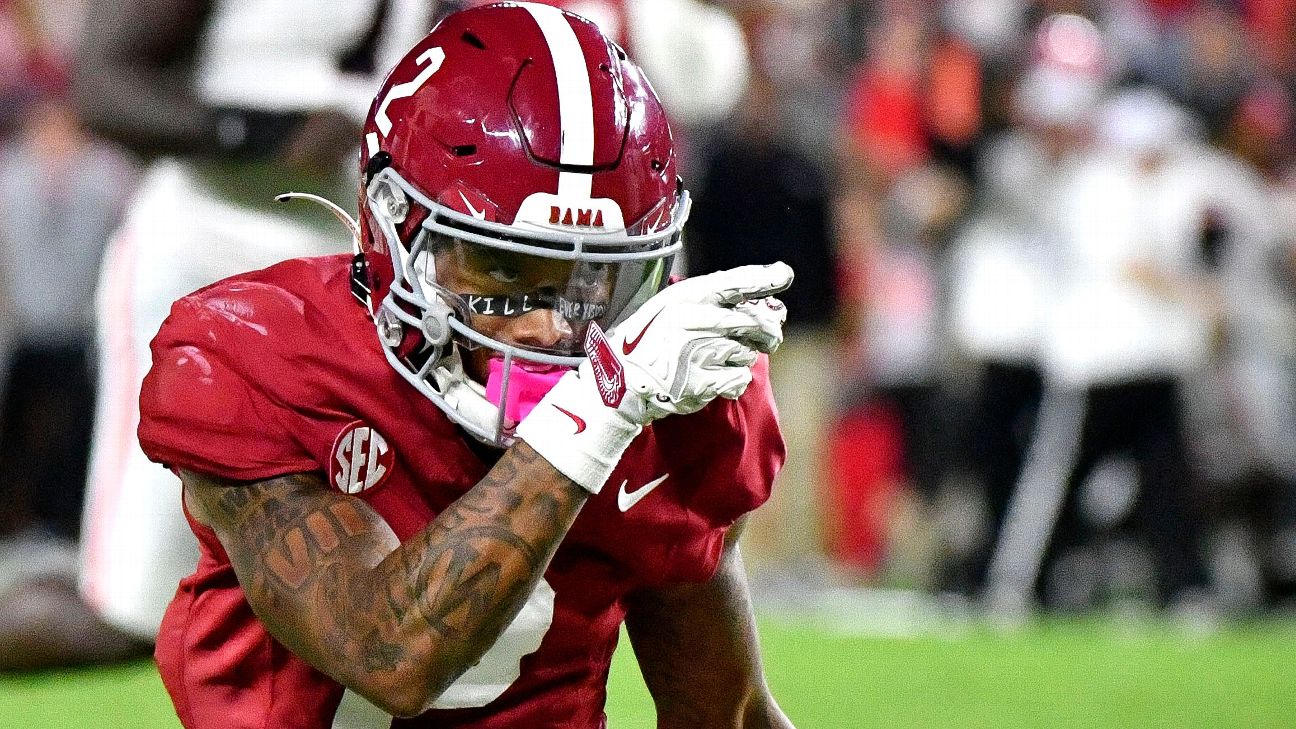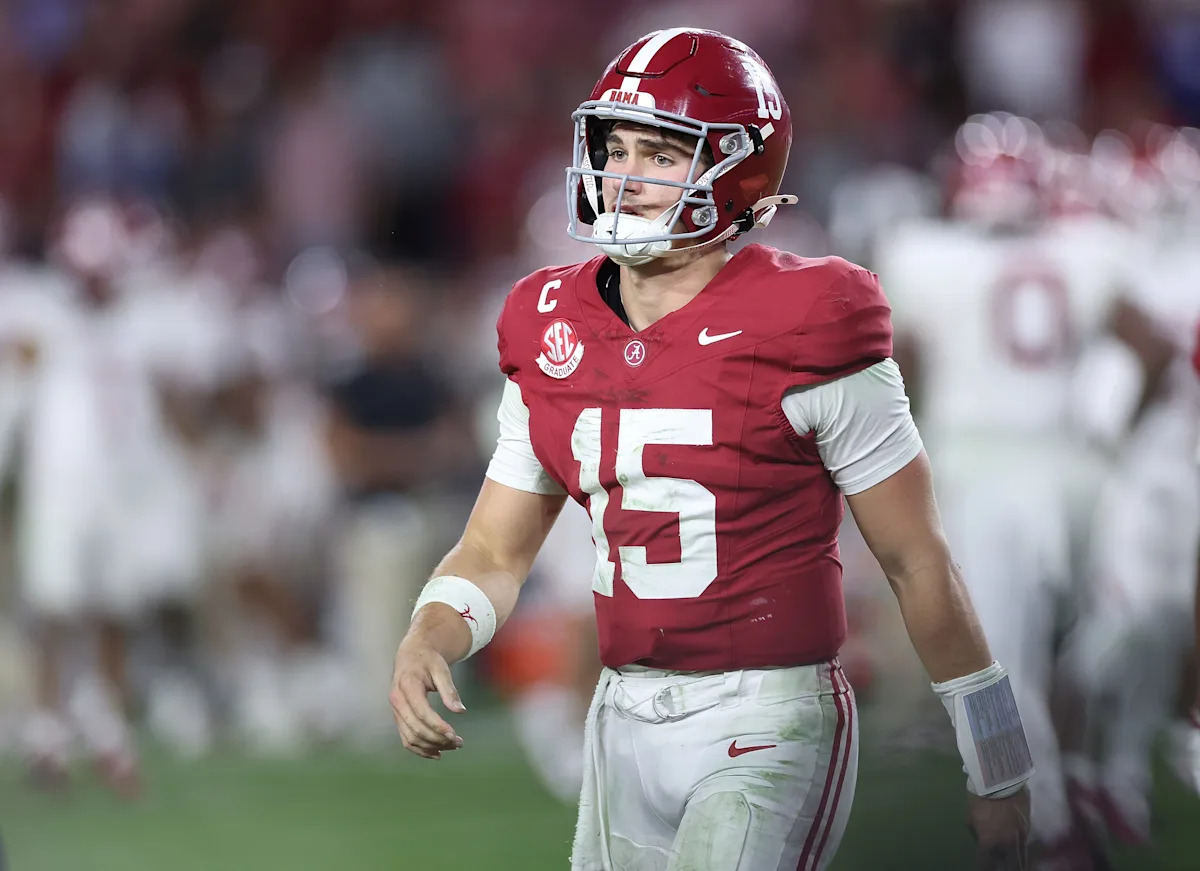Second-half offense, second-half defense and fourth-quarter scoring can help you win bets.
Texas A&M’s comeback over South Carolina was wild, but it got me thinking. We saw Indiana in a comeback win last week against Penn State; this week, it was the Aggies. It forced me to stop, rewind and rethink how we talk about playoff teams.
The Aggies were down 27 points at the half, trailing the Gamecocks 30-3 after a pair of ugly interceptions. That’s where most teams fold, quarterbacks crumble and coaching staffs panic, shortening the playbook and calling the game as if they’re afraid of their own shadow.
Neither Indiana nor A&M did that.
Editor’s Picks
2 Related
Mike Elko had his squad come out of the locker room like a completely different team. Quarterback Marcel Reed flipped from liability to Heisman candidate, while every other unit acted as if the first half never happened.
The numbers are absurd. The Aggies outgained South Carolina 371-76 in the second half, outscored the Gamecocks 28-0, had an 18-4 advantage on first down, averaged 9.8 yards per play, had four sacks and did not punt.
That was the psychological signature of a team that refuses to die. And just like Indiana against Penn State, that’s the part that can be overlooked when talking about “great teams.” Some obsess over first-half scripts and record expectations, as if an undefeated team is supposed to be flawless through the end. Some judge teams by how clean the box score looks and are quick to call a team fraudulent the second it wobbles.
The truth is simple: A team that can’t respond to mistakes is fragile. A team that can is dangerous.
The dangerous teams
These teams win by responding, by adjusting and by getting stronger the longer you let them stay in the game. If they make a mess, they clean it up, or can, at least. If they’re losing, they chip away, and if they’re tied in the fourth quarter, they take the game away from you.
These are the teams that can excel in the postseason.
Indiana
First in second-half offense.
Sixth in second-half defense.
Plus-50 in fourth-quarter scoring.
They don’t beat you early. They beat you late.
Notre Dame
Seventh in second-half offense.
Fourth in second-half defense.
Plus-50 in fourth-quarter scoring.
Veteran, disciplined and brutally steady.
Ohio State
First in second-half defense.
Top-20 in second-half offense.
Plus-59 in the fourth-quarter scoring.
This is the most controlled closer in the country. The defense suffocates and shuts you down.
Texas Tech
These are the teams that are balanced, composed and built to win in the margins. These are also the teams I trust with spreads and totals because they have the psychological spine you need in playoff football. These are the teams you can trust to respond to mistakes.
The volatile tier
These are the teams that can scare you or sink you depending on the day. They might deliver a second-half surge or shutdown, have the ability to erase a deficit or can hand opponents the ball and implode. In other words, the ceiling is high, but the floor is exposed.
All of ESPN. All in one place.

Watch college football and much more in the newly enhanced ESPN App. Stream the biggest games
Texas A&M: The comeback proved its upside. The Aggies’ second-half offense is top six in the FBS, but the defense is nowhere close (60th). It’s a volatile engine, capable of detonating a game on either side.
Ole Miss: The only team in the top 10 to score triple digits cumulative in the fourth quarter this season also is plus-57 in the final stanza. You can certainly trust the offense, but hold your breath with everything else.
Alabama: Stable, but the offense doesn’t elevate under pressure. The Crimson Tide are 58th in fourth-quarter scoring with only a plus-32 differential.
Georgia: Disciplined, but they no longer choke games out the way they used to. Their fourth-quarter profile is fine, but not defining, ranking top 20 offensively and defensively.
The fragile teams
These are the teams that look great on paper until you force them to respond to adversity. They fade in the second half, shrink in the fourth and survive games but don’t control them.
College Pick ‘Em

Pick college football winners every week; compete for $100K in prizes. FREE to play! Make Your Picks
Oregon: Early execution, but late-game anxiety. The negative fourth-quarter margin says everything (minus-4).
Oklahoma: The Sooners are 56th in second-half scoring with a negative point differential (minus-7). The defense holds, but the offense can’t generate any bit of momentum (same story all season). This is textbook fragility.
These teams need the script to hold, because if it breaks, so do they.
What it means
Whether we are talking about wins, style points or efficiency, none tell you how a team will react the moment it becomes responsible for its own mess. This late into the season, that’s what matters now. Teams that respond to chaos are built to go deep in the playoffs, while the teams that collapse won’t survive. We are seeing the separation in real time.
At this point in the season, your second-half identity is your truth.
The betting angle
If you’re looking for actionable value, here’s the framework you should consider riding into the final stretch.
Look at second-half spreads or totals. Hammer resilient teams to close games. Indiana, Notre Dame, Ohio State and Texas Tech are teams that can still surge late — or shut offenses down — and the fourth-quarter numbers back it up. If they’re trailing, they’re live. If it’s tied, they can take control.
Fade fragile teams in the second half — Oklahoma, Texas, Oregon — and consider second-half unders or second-half fades. If they’re leading, attack them, because there’s a chance they don’t close and instead let teams back in.
Play volatility with Texas A&M. If the Aggies are behind, play the second-half over. If they’re ahead, play the second-half under for their opponent. Their identity swings, but it’s predictable.
This is the edge for bowl season to look at other teams and for playoff races within the top 10. Second-half identity is one data point to predict who survives and who collapses.
Not gospel, but a framework to work with.






















